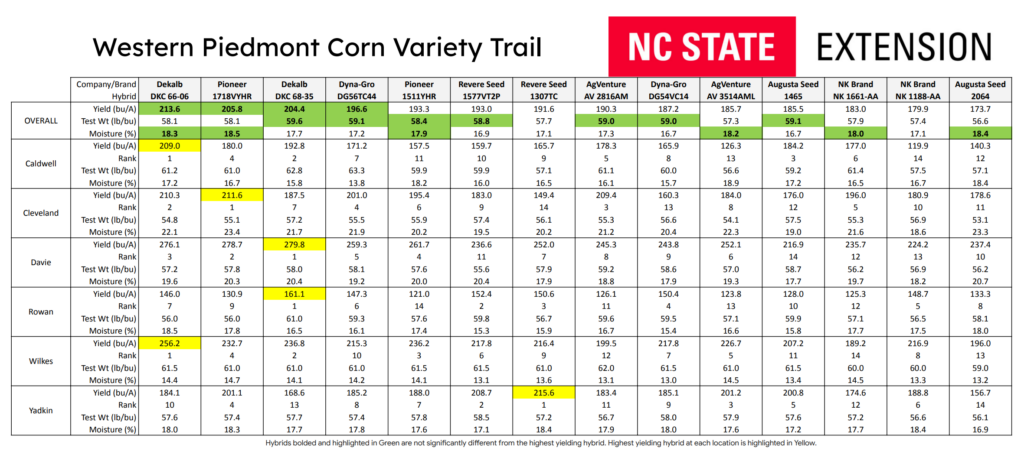Western Piedmont Corn Variety Trail 2023
go.ncsu.edu/readext?973929
en Español / em Português
El inglés es el idioma de control de esta página. En la medida en que haya algún conflicto entre la traducción al inglés y la traducción, el inglés prevalece.
Al hacer clic en el enlace de traducción se activa un servicio de traducción gratuito para convertir la página al español. Al igual que con cualquier traducción por Internet, la conversión no es sensible al contexto y puede que no traduzca el texto en su significado original. NC State Extension no garantiza la exactitud del texto traducido. Por favor, tenga en cuenta que algunas aplicaciones y/o servicios pueden no funcionar como se espera cuando se traducen.
Português
Inglês é o idioma de controle desta página. Na medida que haja algum conflito entre o texto original em Inglês e a tradução, o Inglês prevalece.
Ao clicar no link de tradução, um serviço gratuito de tradução será ativado para converter a página para o Português. Como em qualquer tradução pela internet, a conversão não é sensivel ao contexto e pode não ocorrer a tradução para o significado orginal. O serviço de Extensão da Carolina do Norte (NC State Extension) não garante a exatidão do texto traduzido. Por favor, observe que algumas funções ou serviços podem não funcionar como esperado após a tradução.
English
English is the controlling language of this page. To the extent there is any conflict between the English text and the translation, English controls.
Clicking on the translation link activates a free translation service to convert the page to Spanish. As with any Internet translation, the conversion is not context-sensitive and may not translate the text to its original meaning. NC State Extension does not guarantee the accuracy of the translated text. Please note that some applications and/or services may not function as expected when translated.
Collapse ▲Since the USDA’s first corn yield records in 1866, there have been significant advancements in corn production. Initially averaging 26 bushels per acre, corn yields have steadily increased, thanks largely to the introduction of hybrid varieties in the 1930s. Corn hybrids, initially met with skepticism but proved their worth by thriving in challenging conditions like the 1936 drought.
Today, corn serves multiple purposes, from animal feed to ingredients in everyday products. Understanding this, the North Carolina Official Variety Trial (OVT) program and the Western Piedmont Corn Variety Trial (Caldwell, Cleveland, Davie, Rowan, Wilkes, and Yadkin counties), provide vital yield data on corn varieties to growers. These trials help farmers choose the most effective varieties for their region.
Dr. Chad Poole’s Water Resiliency Corn Hybrid Performance Trial further enhances understanding by assessing how different hybrids perform under varied water conditions. This is crucial for predicting how varieties perform in less than optimum conditions.
Farmers can leverage these comprehensive datasets, as well as their own on-farm experience, to select varieties that maximize yield and suit their specific farming conditions. For guidance with these selection tools contact your local agricultural extension agent. Supporting farms and farmers is vital for rural economies across North Carolina.
This work would not be possible without the assistance of the seed corn companies, County Agricultural Extension Agents, and most importantly the local cooperating farmers.
Cooperating Farmers
| Caldwell County | Mountain Crest, Mike Willis |
| Cleveland County | ASR Grain Company, Andrew White and Steve Greene |
| Davie County | Sam Howard |
| Rowan County, | Jimmy Howard |
| Wilkes County | Cranberry Farm, Talmadge Mathis |
| Yadkin County | Shady Grove Dairy Inc., Maurice Smitherman |




